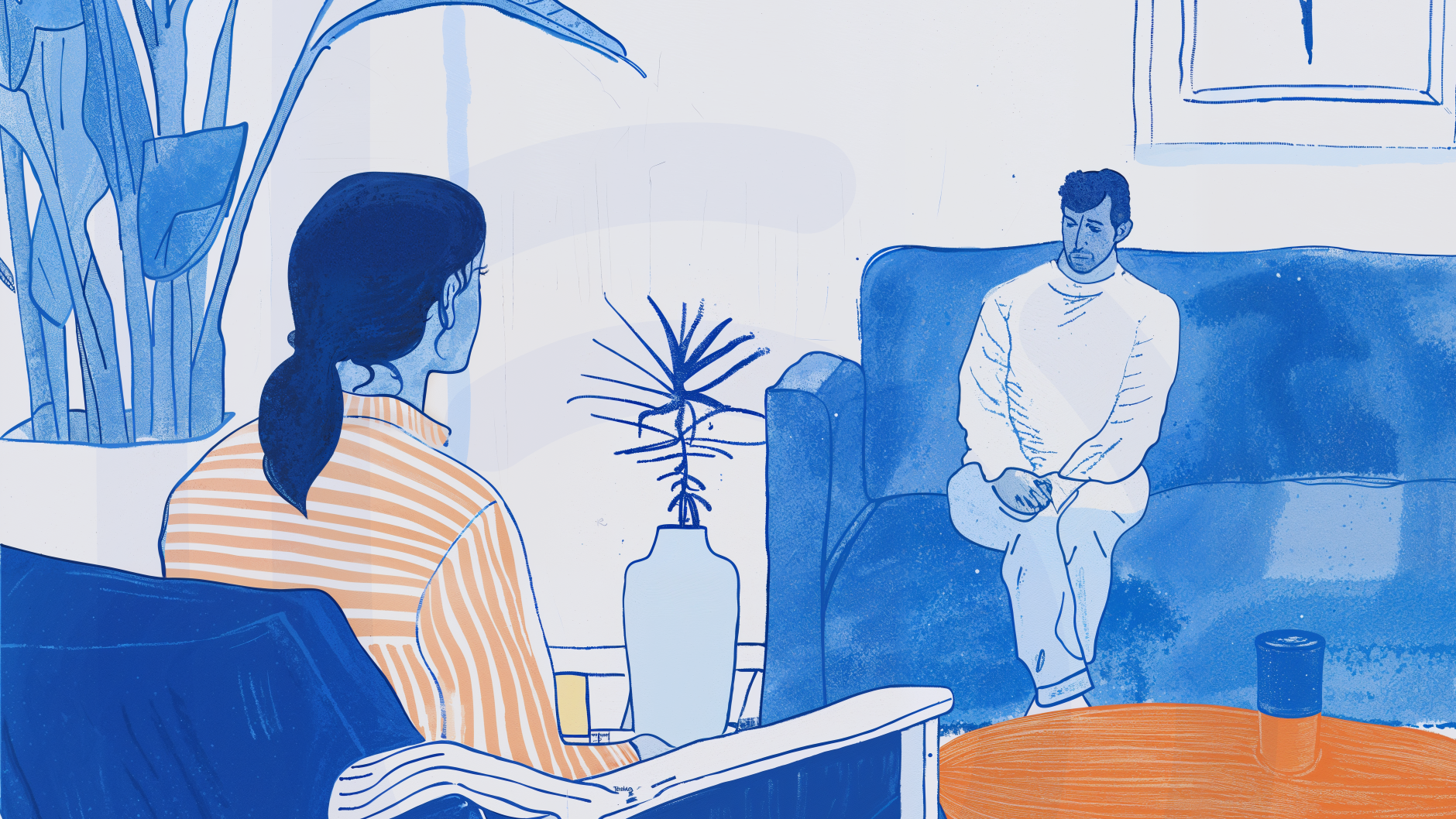In Brief
Imagine sitting across from a client who suddenly accuses you of being critical and dismissive, even though you've been supportive throughout the session. Or perhaps you notice a client becoming unusually attached, seeking your approval in ways that seem too intense for your therapeutic relationship.
These moments aren't usually random or one-off simple misunderstandings. They can reveal deep patterns from your client's past relationships, playing out right in your office.
Recognizing these dynamics can shift your therapeutic work from surface-level symptom management to meaningful relational healing. Let's explore how noticing and working with these patterns can enhance your clinical effectiveness and deepen the therapeutic process.
Understanding Transference in Psychology
Transference involves clients unconsciously redirecting feelings, desires, and expectations from significant figures in their past onto the therapist. This psychological phenomenon happens when clients project emotions originally associated with parents, caregivers, or other important relationships onto their therapist. The therapeutic relationship becomes a stage for reenacting old relational patterns, offering valuable clinical material.
Sigmund Freud first identified transference as a cornerstone of psychoanalytic theory in the early 1900s. He initially saw it as resistance to treatment but later recognized its therapeutic possibilities. Freud noticed that patients developed intense feelings toward him that seemed disproportionate to their actual relationship, leading to his groundbreaking insights about unconscious processes.
Transference shows up in two main forms: positive and negative. Positive transference involves feelings of affection, admiration, or idealization directed toward the therapist. Clients might seek approval, feel protected, or develop romantic feelings. Negative transference includes hostile, suspicious, or critical feelings, where clients might perceive the therapist as judgmental, withholding, or threatening.
It's important to distinguish transference from related concepts. While transference involves redirecting feelings about past relationships onto the therapist, projection is a defense mechanism where clients attribute their own thoughts or feelings to others. Countertransference refers to the therapist's emotional reactions to the client, often triggered by the therapist's own unresolved issues or in response to the client's transference.

Origins and Development of Transference Theory
Freud's early observations revealed how childhood relationships form templates for future relational patterns. He noticed that patients consistently recreated dynamics from their earliest attachments, particularly with parents, in the therapeutic relationship. These patterns appeared as repetitive behaviors, emotional reactions, and expectations that seemed somewhat disconnected, or exaggerated from the present therapeutic context but deeply rooted in past experiences.
Post-Freudian theorists broadened transference theory through several key developments:
- Object Relations Theory: This approach shifted focus from Freud's emphasis on drives to the internalized relationships themselves. Theorists like Melanie Klein and Donald Winnicott demonstrated that we carry mental representations of early caregivers—"internal objects"—that shape how we relate to others throughout life. These internalized relationships contain complex emotional investments\ that get projected onto the therapist.
- Interpersonal Psychoanalysis: Harry Stack Sullivan and others emphasized the interpersonal nature of transference, viewing it as a two-person phenomenon rather than solely the client's projection. This perspective considers how the therapist's actual behavior and personality contribute to transference dynamics.
Modern psychodynamic therapy and relational models interpret transference as a co-created experience between therapist and client. Instead of seeing transference as something to be corrected, contemporary approaches view it as valuable information about the client's relational world. These models emphasize the therapist's role in the transference-countertransference matrix, recognizing that both parties influence the therapeutic relationship. This shift acknowledges that transference isn't just repetition of the past but also holds opportunities for new relational corrective experiences.
Recognizing Transference in the Therapy Room
Transference shows up in therapy through distinct patterns that experienced clinicians learn to identify. The most common presentations include idealization or devaluation of the therapist. Clients who idealize might offer admiring glances, seek excessive approval, or express beliefs that you're the only person who truly understands them. Conversely, devaluation appears as sudden criticism, dismissiveness, or accusations that you're incompetent or uncaring—often without clear provocation.
Repetitive relationship dynamics frequently emerge through specific behaviors:
- Abandonment fears: Clients may react strongly to session endings, vacation announcements, or perceived rejection.
- Authority conflicts: Resistance to therapeutic suggestions, challenging your expertise, or becoming overly compliant.
- Avoidance patterns: Quickly changing topics, stalling mid-conversation, or looking away when approaching emotionally charged material.
- Physical manifestations: Clenched fists, foot tapping, or sudden changes in body posture during certain discussions.
Verbal cues include statements that seem disproportionate to the current situation: "You're trying to control me!" or "You don't really care about me." These often reflect past relational experiences rather than present reality. Non-verbal indicators range from excessive preoccupation with sessions to inappropriate emotional intensity.
Observing these patterns carefully while staying present in therapy is important. Reflective and empathetic listening helps identify when clients' reactions seem disconnected from the immediate therapeutic context. Notice emotional shifts that appear sudden or intense relative to the discussion at hand. These moments often signal transference dynamics at play, offering windows into the client's relational world and unresolved conflicts from past relationships.

Therapeutic Uses of Transference
Transference acts as a powerful diagnostic tool, revealing unresolved conflicts that clients may not consciously recognize. When a client consistently perceives you as withholding or critical despite your supportive stance, this reaction often points to early experiences with caregivers or loved ones who were emotionally unavailable or harsh. These projections provide direct access to the client's internal working models of relationships.
Examining transference can fundamentally shift entrenched relational patterns through several mechanisms:
- Making the unconscious conscious: Clients become aware of automatic responses they've carried for years.
- Providing corrective emotional experiences: The therapeutic relationship offers new possibilities for connection.
- Testing old assumptions: Clients realize their expectations don't always match reality.
- Building new relational templates: Repeated positive experiences create healthier relationship patterns.
Consider Sarah, a 35-year-old client who initially idealized her therapist, bringing gifts and seeking constant reassurance. As therapy progressed, she became increasingly critical, accusing the therapist of not caring enough. Through gentle exploration, they discovered Sarah was recreating her relationship with her mother. First desperately seeking approval, then protecting herself through anger when she feared rejection.
The therapist maintained consistent warmth while exploring these patterns. Sarah gradually recognized how she pushed people away when feeling vulnerable or on the verge of being rejected. Over months of working through these transference reactions, she developed more balanced relationships outside therapy. She learned to tolerate closeness without idealizing others or preemptively rejecting them. This transformation occurred not through intellectual insight alone, but through repeatedly experiencing a different relational outcome within the safety of the therapeutic relationship.

Managing and Working Through Transference
Dealing with transference calls for careful clinical skill and timing. The best method starts with gently naming the transference, using tentative language that encourages exploration rather than confrontation. You might say, "I notice you seem to experience me as critical, similar to how you've described your father. What do you think about that connection?"
Key clinical strategies include:
- Timing interventions carefully: Wait until the therapeutic relationship is strong enough to handle the exploration of transference dynamics.
- Using process comments: Observe patterns aloud without interpretation: "I've noticed when we discuss your achievements, you often minimize them and look for my approval."
- Linking past to present: Assist clients in connecting current reactions to historical relationships without pushing for insights.
- Maintaining empathic boundaries: Stay emotionally available while keeping clear professional limits to prevent enmeshment.
The risks of mishandling transference are significant. Premature or awkward interpretations can feel invasive, potentially retraumatizing clients who aren't ready to examine these patterns. Therapist enmeshment occurs when boundaries blur, and you become too involved in the transference drama instead of maintaining therapeutic distance. This can reinforce unhealthy patterns instead of resolving them.
Alliance ruptures happen when transference interpretations feel accusatory or dismissive of the client's current experience. A client who feels genuinely unheard might withdraw if told their complaints are "just transference." The therapeutic relationship requires careful balance—acknowledging the reality of the client's experience while gently exploring its historical roots.
Countertransference: A Necessary Counterpart
While transference involves clients projecting feelings onto therapists, countertransference represents the therapist's emotional reactions to clients. These reactions stem from two sources: the therapist's own unresolved issues and responses triggered by the client's transference. Unlike transference, which originates from the client's past relationships, countertransference comes from the therapist's personal history and immediate responses to the therapeutic dynamic.
Your emotional reactions serve as valuable diagnostic tools when properly understood. Feeling suddenly protective might signal a client's vulnerability or helplessness. Experiencing irritation could indicate the client is pushing boundaries or recreating conflict patterns. These reactions offer clues about both the client's relational style and your own emotional triggers.
Key strategies for managing countertransference include:
- Regular supervision: Present challenging cases to supervisors who can identify blind spots and provide objective perspectives on your reactions.
- Structured self-reflection: After sessions, note emotional responses, physical sensations, and thoughts that arose during client interactions.
- Peer consultation: Discuss reactions with trusted colleagues who understand the complexities of therapeutic relationships.
- Personal therapy: Address your own unresolved issues that might interfere with client work.
- Mindfulness practices: Stay present during sessions to notice reactions without immediately acting on them.
The goal isn't eliminating countertransference—it's impossible and undesirable. Instead, develop awareness of these reactions and use them therapeutically. Your emotional responses, when understood and contained, become powerful tools for understanding the client's impact on others and the dynamics they create in relationships.

Transference Across Modalities and Populations
Transference isn't limited to psychodynamic therapy—it shows up across all therapeutic approaches, though each modality addresses it differently. Knowing these variations helps you recognize and work with transference regardless of your theoretical orientation.
In CBT, transference often appears as schema reactivation. When clients' early maladaptive schemas activate, they might see you through distorted lenses, perceiving criticism where none exists or expecting abandonment despite consistent support. While CBT doesn't traditionally focus on transference analysis, recognizing these patterns helps identify cognitive distortions and strengthen the therapeutic relationship.
Humanistic therapies witness transference through clients viewing therapists in idealized roles. You might become the "good parent" figure, unconditionally accepting and nurturing in ways clients never experienced. This positive transference can aid healing, though it requires careful handling to avoid dependency.
Group therapy creates unique transference dynamics:
- Sibling rivalries: Members compete for the therapist's attention or approval
- Parental projections: The therapist becomes the authority figure while peers represent siblings
- Multiple transferences: Members project onto each other, recreating family systems
- Collective transference: The group itself becomes a projected object
Cultural factors significantly influence transference work. Clients from collectivist cultures might experience transference through family or community perspectives, projecting expectations about hierarchy, respect, and indirect communication. Individualist frameworks often produce more direct, personal transference patterns. Power dynamics, cultural trauma, and experiences of marginalization shape how clients relate to therapists across cultural lines. Recognizing these cultural variations prevents misinterpreting culturally-informed relational patterns as pathological transference.
Key Takeaways
Transference continues to play a significant role in contemporary therapy, reaching beyond its psychoanalytic roots. This universal phenomenon shows up in every therapeutic relationship, no matter the modality or theoretical approach. Recognizing transference patterns shifts therapy from just managing symptoms to fostering meaningful relational healing.
Skillful transference work involves several core skills:
- Pattern recognition: Identifying when clients' reactions arise from past relationships rather than present interactions
- Therapeutic timing: Deciding when to acknowledge transference versus when to simply be aware of it
- Boundary maintenance: Being emotionally available while maintaining professional limits
- Cultural attunement: Understanding how cultural backgrounds influence transference expressions
Your own emotional reactions provide important clinical insights. Countertransference isn't something to eliminate but a tool to understand. Regular supervision, self-reflection, and personal therapy help you distinguish between your issues and therapeutic responses to clients' material.
Cultural sensitivity is particularly important in transference work. Misinterpreting culturally-informed behaviors as pathological transference can damage therapeutic relationships and reinforce harmful assumptions.
The therapeutic relationship offers a unique setting for change. Through experiencing new relational possibilities with you, clients can revise their internal models of relationships. This process requires patience, skill, and a deep respect for each client's pace and background. Effective transference work ultimately allows clients to move beyond repetitive patterns toward healthier connections.

How Blueprint can help streamline your workflow
Blueprint is a HIPAA-compliant AI Assistant built with therapists, for the way therapists work. Trusted by over 50,000 clinicians, Blueprint automates progress notes, drafts smart treatment plans, and surfaces actionable insights before, during, and after every client session. That means saving about 5-10 hours each week — so you have more time to focus on what matters most to you.
Try your first five sessions of Blueprint for free. No credit card required, with a 60-day money-back guarantee.
























